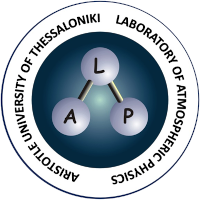LAP infrastructure
LAP Infrastructure
Loading...
At the Laboratory of Atmospheric Physics (LAP), systematic measurements of solar radiation and atmospheric constituents are routinely performed using both active and passive remote sensing techniques. The first measurements of total ozone by UV spectroscopy began in 1982, and since then LAP has developed and/or procured scientific equipment of the highest standards, as they are defined by International Organizations and Networks. The LAP monitoring station and its routine atmospheric observations are integrated into the Global Atmosphere Watch of the World Meteorological Organization (GAW/WMO), the Network for the Detection of Atmospheric Composition Change (NDACC), the European Brewer Spectrophotometer Measurement Network (EUBREWNET) and the European Aerosol, Clouds and Trace Gases Research Infrastructure (ACTRIS), to which LAP is participating as an official national infrastructure station, part of the PANACEA network (https://panacea-ri.gr/).
Loading...
At the Laboratory of Atmospheric Physics (LAP), systematic measurements of solar radiation and atmospheric constituents are routinely performed using both active and passive remote sensing techniques. The first measurements of total ozone by UV spectroscopy began in 1982, and since then LAP has developed and/or procured scientific equipment of the highest standards, as they are defined by International Organizations and Networks. The LAP monitoring station and its routine atmospheric observations are integrated into the Global Atmosphere Watch of the World Meteorological Organization (GAW/WMO), the Network for the Detection of Atmospheric Composition Change (NDACC), the European Brewer Spectrophotometer Measurement Network (EUBREWNET) and the European Aerosol, Clouds and Trace Gases Research Infrastructure (ACTRIS), to which LAP is participating as an official national infrastructure station, part of the PANACEA network (https://panacea-ri.gr/).
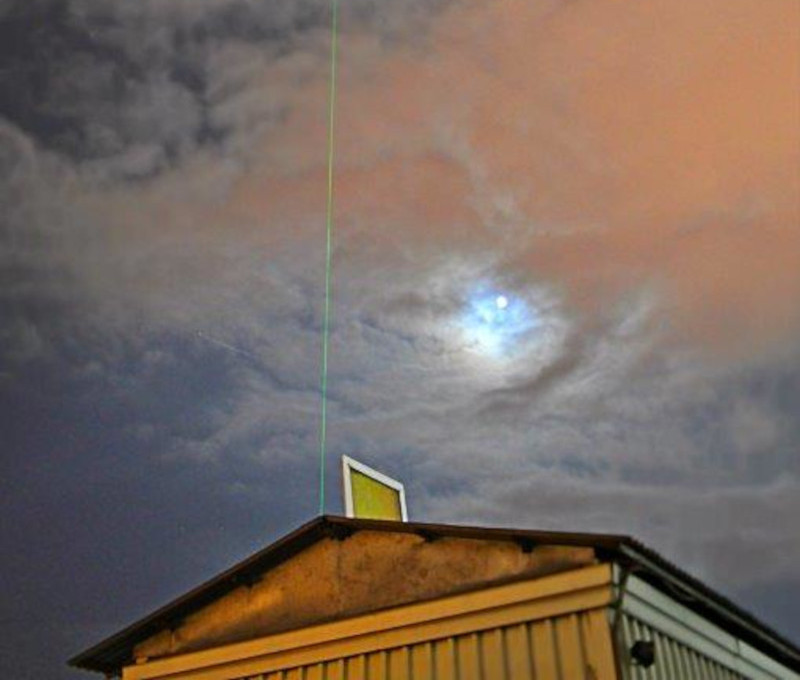
| Technical Characteristics |
|---|
| Multiwavelength Raman Lidar with depolarization capabilities Measurement height range: 0.5km to 15km Laser source: 0.5 nm Operational temperature range: Pulsed Nd-YAG laserNewtonian telescope, custom designed by Raymetrics SA |
| Type of measurements |
|---|
| Aerosol backscatter profiles at 355, 532 and 1064nm Aerosol extinction profiles at 355 ad 532nm Particle Linear Depolarization ratio at 532nm |
| Operation time range |
|---|
| 2001-today, member of EARLINET/ACTRIS Data are available at https://data.earlinet.org |
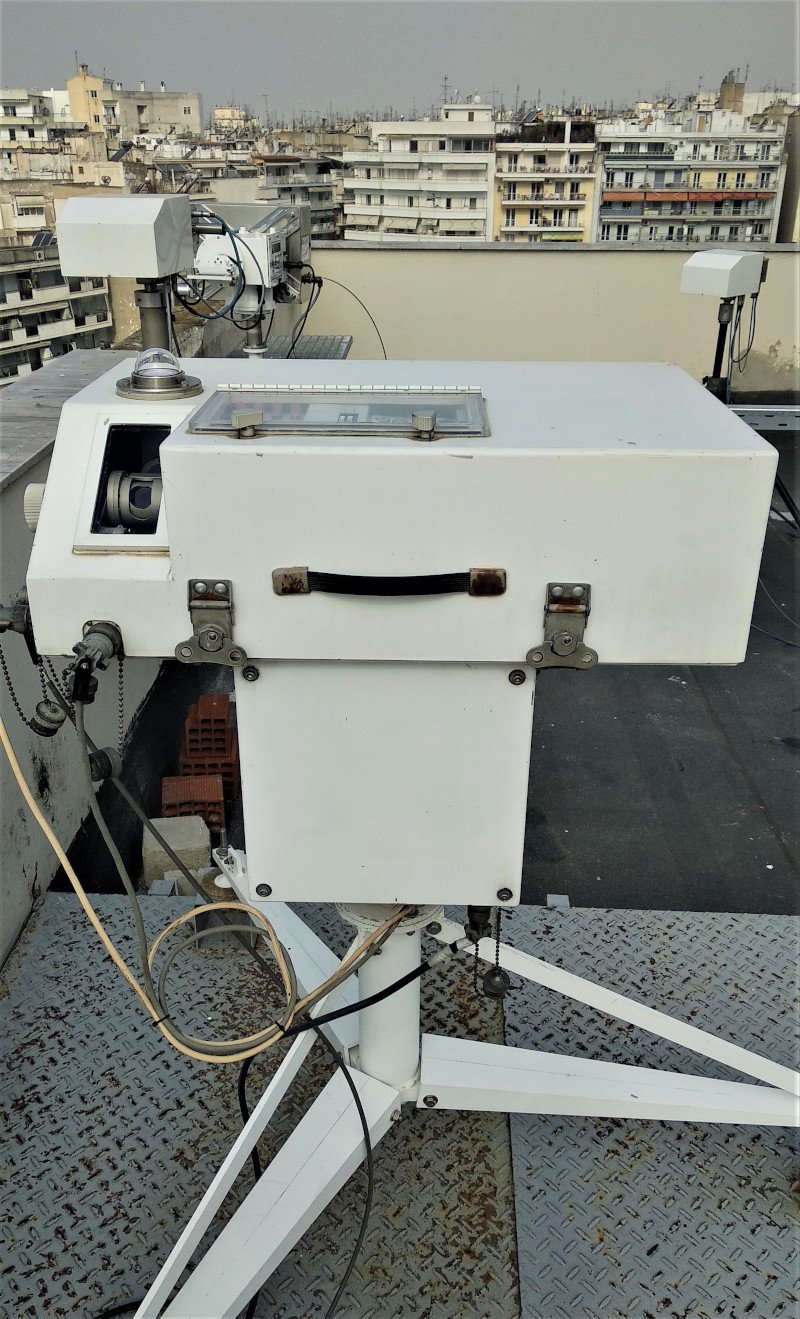
| Technical Characteristics |
|---|
| Wavelength range: 290 nm to 330 nm Resolution: 0.5 nm Operational temperature range: -20 ºC to +50 °C http://kippzonen-brewer.com/about-brewer/technical-specs/ |
| Type of measurements |
|---|
| Spectral measurements of UV solar irradiance and Total Ozone Column measurements |
| Operation time range |
|---|
| 1982 – today |
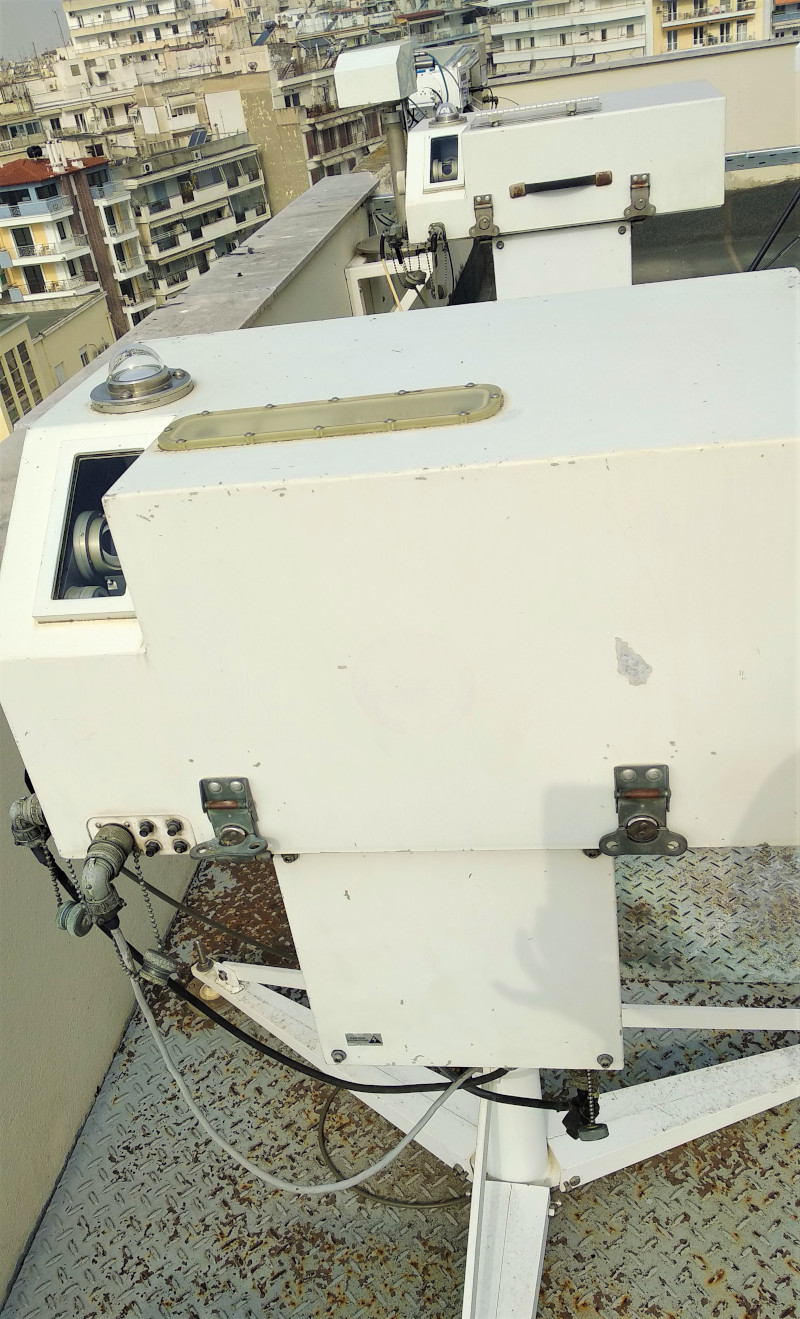
| Technical Characteristics |
|---|
| Wavelength range: 286.5 nm to 366 nm Resolution: 0.5 nm Operational temperature range: -20 ºC to +50 °C http://kippzonen-brewer.com/about-brewer/technical-specs/ |
| Type of measurements |
|---|
| Spectral measurements of UV solar irradiance and Total Ozone Column measurements |
| Operation time range |
|---|
| 1992 – today |
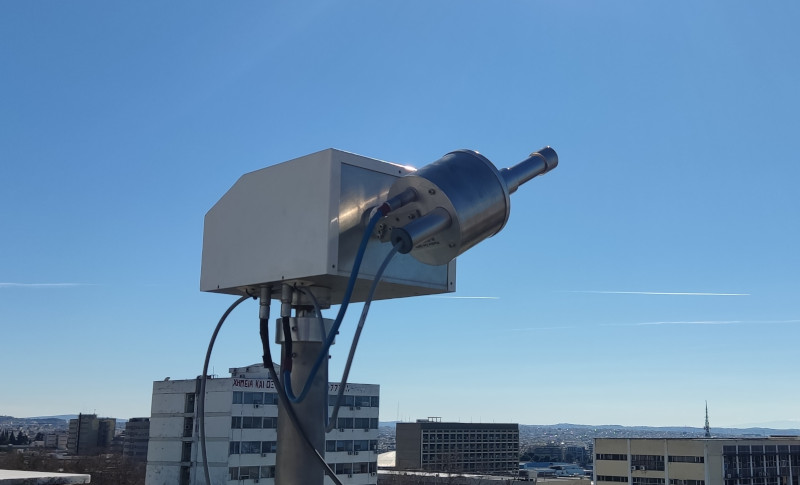
| Technical Characteristics |
|---|
| Wavelength range: 280 – 539 nm Spectral resolution: ~0.55 nm Entrance slit width: 50 μm Signal to noise ratio of a single measurement: 450:1 Tracker pointing resolution: 0.125° Field of view: 1° |
| Type of measurements |
|---|
| Zenith-Sky, Off-Axis and Direct-Sun measurements |
| Operation time range |
|---|
| 2014 – today |

| Technical Characteristics |
|---|
| Enhanced Sun Tracker Dual axis, high precision tracker system Full hemispherical pointing capability Weatherized for durable outdoor operation Pointing resolution: 0.01° UV/Vis Spectrometer Wavelength range: 280 – 530 nm Spectral resolution: 0.6 nm Entrance slit width: 50 μm Vis/NIR Spectrometer Wavelength range: 400 – 900 nm Spectral resolution: 1.1 nm Entrance slit width: 50 μm |
| Type of measurements |
|---|
| Zenith-Sky, Off-Axis, Direct-Sun and Direct-Moon measurements |
| Operation time range |
|---|
| 2022 – today
Joined Pandonia Network at Sept. 2022 |

| Technical Characteristics |
|---|
| CIMEL CE318-T – Sun Sky Lunar Multispectral Photometer |
| Type of measurements |
|---|
| Day-time (SUN/SKY) & night-time (MOON: from 1st to last quarter) measurements: AOD, volume size distribution, refractive index, water vapor |
| Operation time range |
|---|
| Since 2003, member of AERONET, data are available at https://data.earlinet.org |
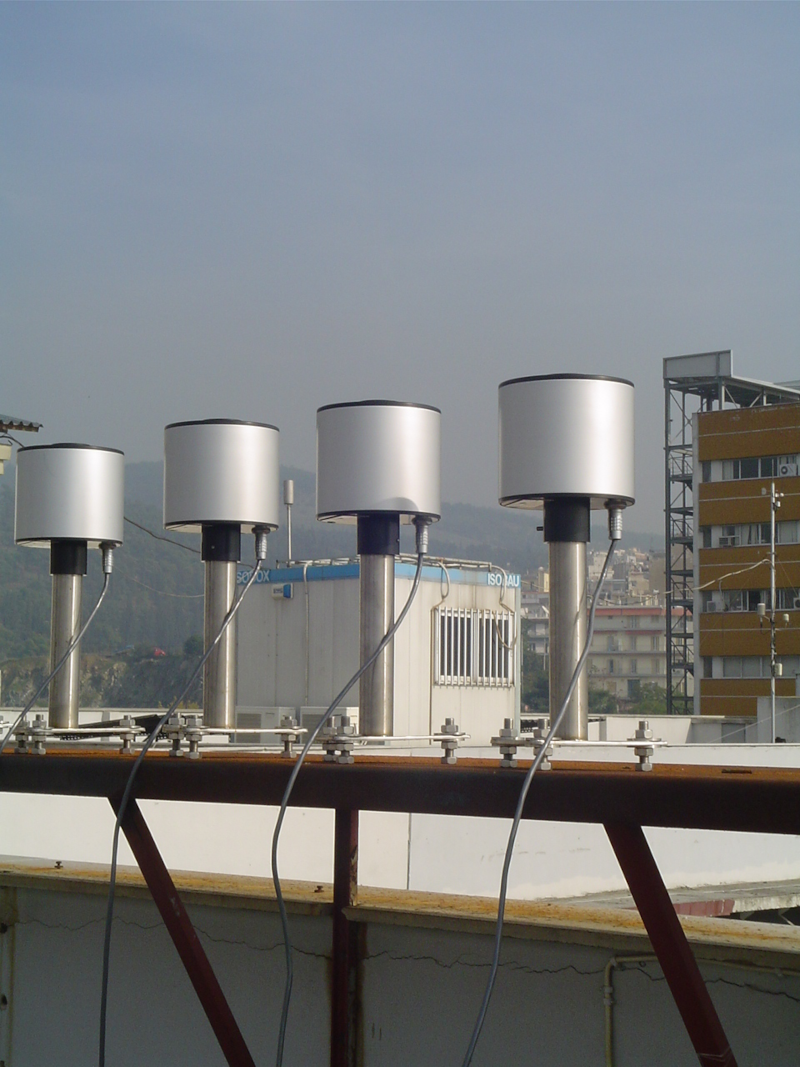
| Technical Characteristics |
|---|
| Filters of (~10 nm FWHM) centred at 302, 312, 320, 340, 380 nm. PAR channell (400-700 nm) |
| Type of measurements |
|---|
| Solar Irradiance at five narrowband spectral regions and for Photosynthetic Active Radiation (PAR). |
| Operation time range |
|---|
| Since 2005 |
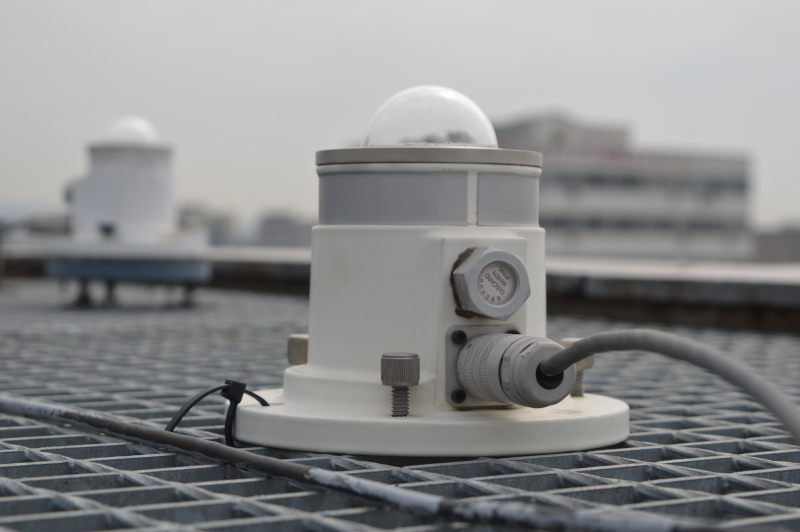
| Technical Characteristics |
|---|
| YES-UVB-1 broadband radiometer Spectral range 290-400 nm with CIE-weighting Temperature stabilised at 45 °CTUVR EPPLEY and EKO UV-A radiometers Spectral range 315-400 nmBoth instruments record 1 min averages |
| Type of measurements |
|---|
| Erythemal (CIE-weighted) solar Irradiance UV-A irradiance |
| Operation time range |
|---|
| Since 1991 Since 1993 (TUVR EPPLEY), since 1998 (EKO UV-A) |
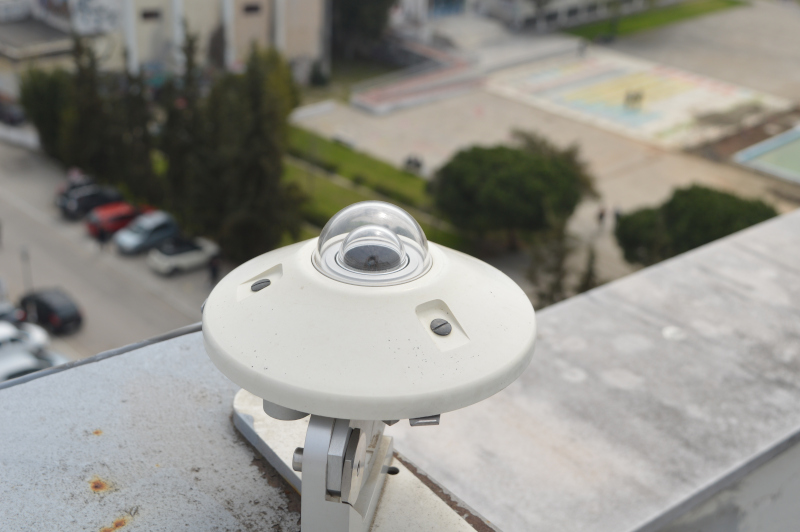
| Technical Characteristics |
|---|
| CM-21 Kipp & Zonen pyranometer spectral range 290-4000 nm One unit is mounted horizontally and one is tilted at 40.5° wrt to horizontal plane and phasing South Both instruments record 1 min averages |
| Type of measurements |
|---|
| Global horizontal irradiance Global tilted irradiance |
| Operation time range |
|---|
| Horizontal: since 1993 Tilted: since 2011 |

| Technical Characteristics |
|---|
| CHP1 Kipp & Zonen PyrheliometerSpectral range 300 – 4000 nm Field of view 5° Temperature recorded Sun tracking with resolution of 0.125° |
| Type of measurements |
|---|
| Direct Global Irradiance, with continuous sun tracking |
| Operation |
|---|
| Since 2016
More information: |
| Technical Characteristics |
|---|
| Type of Measurements |
|---|
| Time period of operation |
|---|
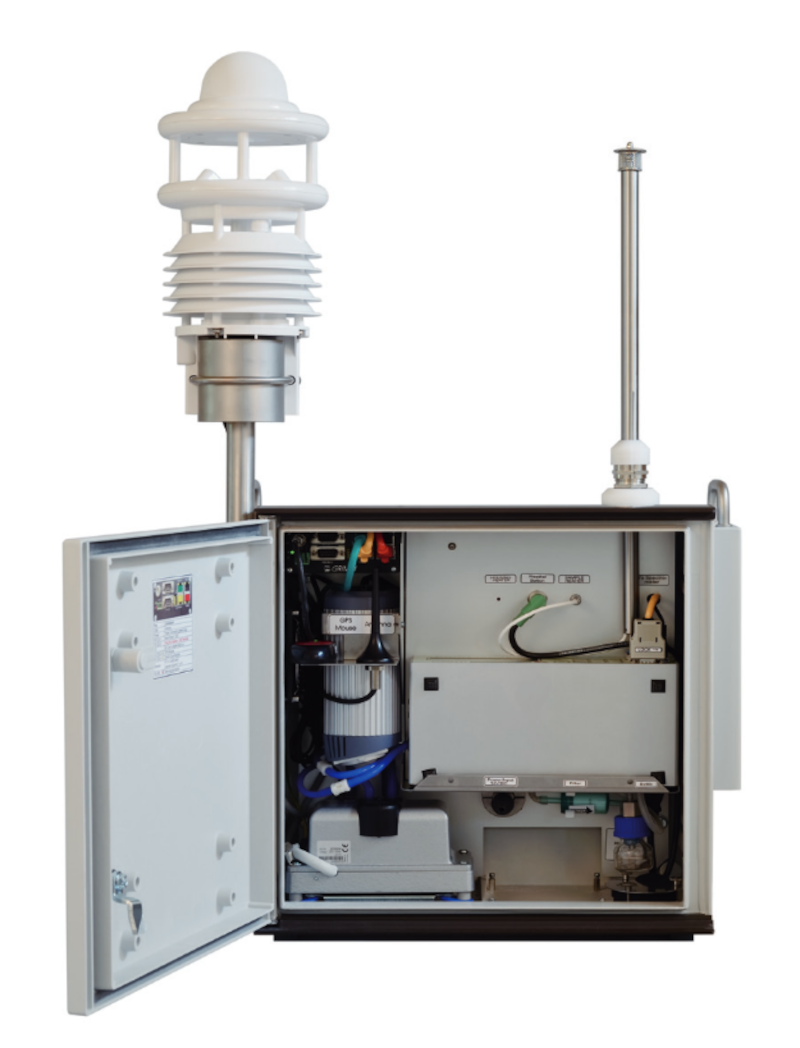
| Technical Characteristics |
|---|
| GRIMM spectrometer. OPCs have a very basic design principle: particles are sampled into the instrument and traverse perpendicular to a laser beam. A detector set off-axis from the laser and particle beam then records scattering intensity signals from individual particles. |
| Type of measurements |
|---|
| PM1, PM2.5, PM10, size-resolved number concentration per cubic centimetre of particles in the size range of 0.3 to 20 microns (optical) |
| Operation time range |
|---|
| Data available on request during campaigns since 2020 |

| Technical Characteristics |
|---|
| Dark room equipped with an instrument and calibration-lamp holder, a laser beam and lamp current/voltage controlling system through a prototype resistor and a purpose-built software. |
| Type of measurements |
|---|
| Spectral absolute calibration of the Brewer spectrophotometers and other instruments measuring UV irradiance |
| Operation time range |
|---|
| 1993 -today |
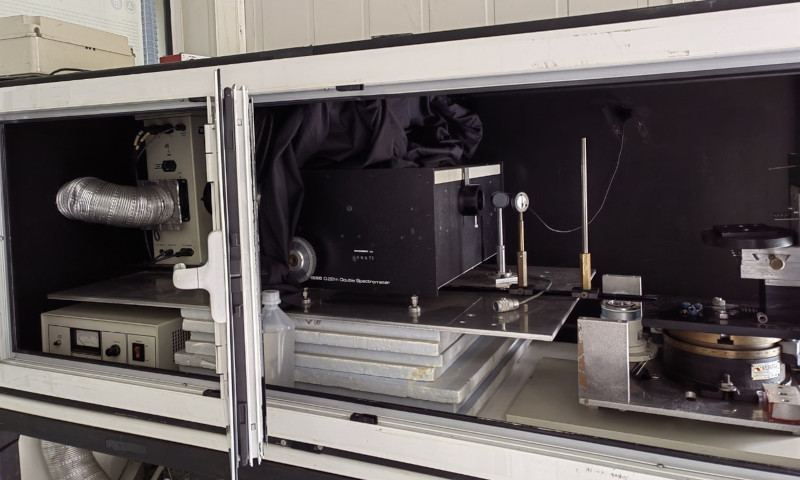
| Technical Characteristics |
|---|
The characterisation unit consists of:
|
| Type of measurements |
|---|
| Relative spectral response and angular response characterisation of radiometers |
| Operation time range |
|---|
| 1998 – today |
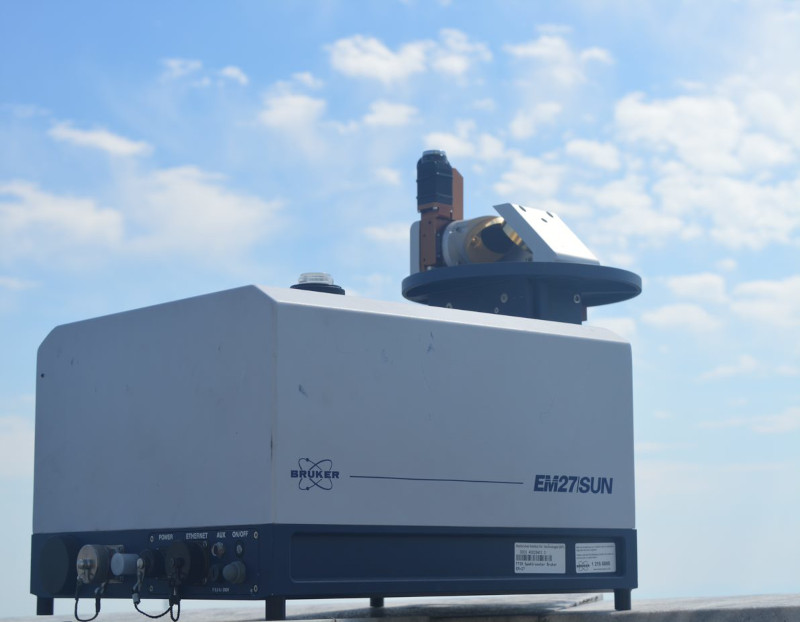
| Technical Characteristics |
|---|
| EM27SUN spectrometer was developed by KIT in cooperation with Bruker Optics GmbH, Ettlingen, Germany. It is a portable direct solar-viewing ground-based FTIR spectrometer, consisting of a spectrometer body with dimensions of 35 x 40 x 27 cm and a solar tracker, which is directly mounted on the spectrometer. |
| Type of measurements |
|---|
| Total column-averaged dry-air mole fraction (DMF) of CO2, O2, CH4, CO and H2O can be retrieved from NIR spectral range (4000-12000 cm-1). Only clear-sky measurements available. 2 channels [4000-5500 (XCH4) , 5000-12000 (XCH4_S-5P Band)] |
| Operation time range |
|---|
| January 2019 – today, COCCON site in Thessaloniki |
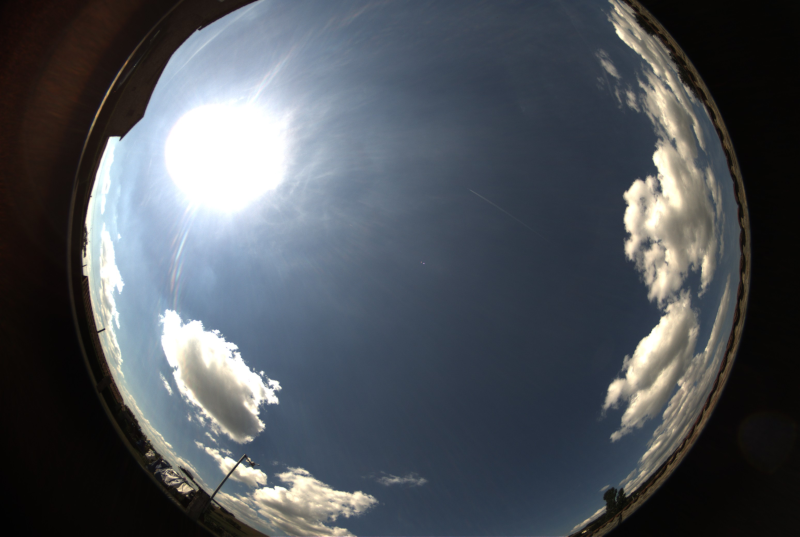
| Model |
|---|
| MOBOTIX Q24 |
| Technical Characteristics |
|---|
| Fish-eye lens in front of the entrance optics Field of view: 180° Sampling rate: 1 min Image resolution: 1280×960 pixels |
| Type of measurements |
|---|
| All-Sky images |
| Operation time range |
|---|
| 2005 – today |

| Technical Characteristics |
|---|
| Davis meteorological station |
| Type of measurements |
|---|
| Temperature, humidity, precipitation, wind directin and speed |
| Operation time range |
|---|
| 2020 – today |
| Technical Characteristics |
|---|
| Type of measurements |
|---|
| Operation time range |
|---|
